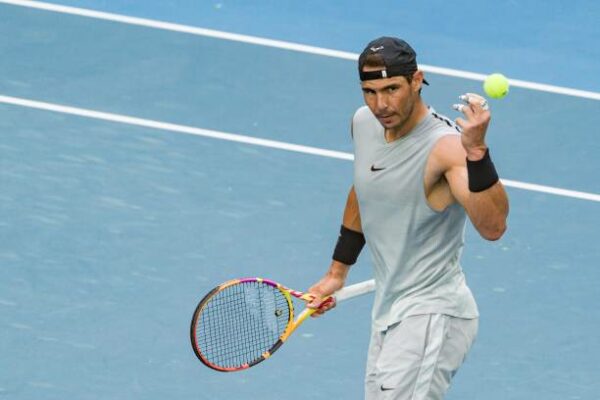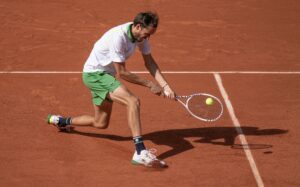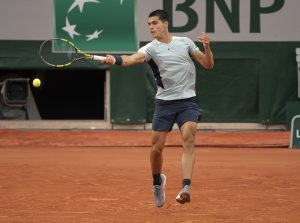Amid all the controversy surrounding Novak Djokovic, it is possible to forget not only that the Australian Open will start next week but that it could be a truly historic tournament. That is because it could see a new record being set for the number of Majors won by a man, with Djokovic (if he is allowed to compete) and Rafael Nadal both trying to split their three-way tie with Roger Federer on 20 Majors by winning their 21st Grand Slam title.
On four occasions this century, a male tennis player has had the chance to become the “winningest” player in history by setting a new record for the most Majors won by a man. Twice those attempts have been successful and twice they have not been. Here’s a look back at those four previous attempts and a look forward at the possibility that Melbourne 2022 will see tennis history being made.
Will History Be Made at the Australian Open
Pete Sampras Wins At Wimbledon to Secure His 13th Major in 2000
For more than 30 years (in fact, since his last Major win at the French Open in 1967), Australia’s Roy Emerson stood supreme at the top of the men’s game with 12 Majors, after winning the Australian Open six times and each of the other three Majors twice. Although both his compatriot Rod Laver and Sweden’s Bjorn Borg both won 11 Majors (Laver after completing his second Calendar Grand Slam in 1969 and Borg after winning his sixth French Open in 1981), surprisingly – if not astonishingly – neither man won another Major afterwards.
Consequently, Emerson was left alone at the very top of the men’s game, at least statistically speaking, until Pete Sampras won his seventh and final Wimbledon title in 2000. Sampras, of course, had dominated men’s tennis in general and Wimbledon in particular for most of the 1990s. By the end of the decade, however, his mighty powers – especially the finest serve and forehand that the men’s game has ever seen, especially on grass – were finally beginning to wane.
Consequently, his final triumph at the All England Club was arguably his finest, as he resisted the brilliant and much younger Australian Pat Rafter to win in four sets ( 6–7 (10–12), 7–6 (7–5), 6–4, 6–2) after nearly losing the first two sets in tie-breaks. He would never win at Wimbledon again, but he would win one more Major – the 2002 US Open, which was the last Major he ever played in – to take his total to 14 Major victories, before retiring soon afterwards.
Roger Federer Secures His 15th Major at Wimbledon in 2009
It was Federer who ended his idol Sampras’s long reign at Wimbledon by defeating him in the fourth round in 2001. Less than a decade later, Federer would overtake Sampras’s record of 14 Major titles and crown his own golden decade by winning his 15th Major at Wimbledon, after defeating the USA’s Andy Roddick in the final, 5–7, 7–6 (8–6), 7–6 (7–5), 3–6, 16–14, in a match that was watched not only by Sampras but by Laver and Borg, two other all-time greats.
If Sampras is undoubtedly the finest ever server on grass, it is arguable that Roddick produced the finest ever serving in a single match when he took Federer all the way in 2009. Having lost to the great Swiss relatively meekly in two previous Wimbledon finals in 2004 and 2005, Roddick was obviously determined third time around to go down fighting. In fact, Federer only broke his serve once in the entire match, in the 31st game of the fifth set, but that was enough for him to win his 15th Major.
He would go on to win five more Majors in the noughties, the last of which was the 2018 Australian Open, to take his total of Major victories to 20. At the time, it was thought by some – including Roddick himself, who had become a respected commentator after retiring from playing – that that figure might stand unchallenged for decades. However, within three short years, it was under attack, and not just by one player but by two.
Rafael Nadal Loses at the French Open To Remain Stuck on 20 Majors
Nadal equalled Federer’s total of 20 Majors at the 2020 French Open, which, because of Covid cancellation and subsequent rescheduling, took place not in the balmy Paris spring or early summer but in the cold Paris autumn. Djokovic, for one, appeared to be entirely frozen, as he suffered his worst ever defeat in a Major final when he went down to Nadal in straight sets, 6–0, 6–2, 7–5. However, Djokovic would exact the sweetest form of revenge just over six months later, when the French Open returned to its usual place in the tennis calendar and the Serb turned the tables on the Spaniard.
The 2021 French Open semifinal between Nadal and Djokovic may just be the greatest men’s clay-court match ever played. What is unarguable is that the third set is the single greatest set of tennis ever played on clay and possibly on any surface. It lasted over an hour and produced the most extraordinary succession of brilliant winners, seemingly impossible ‘gets’ and spectacular rallies that any tennis commentator or writer could ever remember. Djokovic eventually won it on a tie-break and went on to win the match 3-6, 6-3, 7-6 (7-4), 6-2. In the process, he not only ended Nadal’s own reign at Roland Garros but possibly ended Nadal’s time at the very top of men’s tennis, as the Spaniard has barely played since (missing the two other Majors in 2021) and will go into the 2022 Australian Open with little or no match practice under his belt.
Novak Djokovic Defeated in Bid For 21st Major at the US Open
After beating Nadal in Paris in June 2021, Djokovic drew level with him and Federer on 20 Majors by also winning at Wimbledon just over a month later. Therefore, the scene seemed perfectly set for the Serb to complete the Calendar Grand Slam at the US Open at the end of the summer, which would have taken him to 21 Major victories in total and proved that, statistically at least, he is the greatest male tennis player of all time.
Daniil Medvedev, of course, had other ideas, playing sublime tennis of his own to win the 2021 US Open in remarkably straightforward fashion, including defeating Djokovic in straight sets in the final, 6–4, 6–4, 6–4. Perhaps Djokovic’s epic five-set semifinal victory over Alexander Zverev took more out of him than Medvedev’s easy straight-sets semifinal win over Felix Auger-Aliassime took out of the Russian.
Or, perhaps, Djokovic was simply overwhelmed by the pressure of trying to make history rather than simply trying to win a match. But whatever the reason, Medvedev played Djokovic off court to avenge his own thrashing at the hands of Djokovic in the Australian Open final earlier that year. The consolation for Djokovic was that in defeat he was finally hailed by a Grand Slam final crowd in the manner that his great rivals, Federer and Nadal, had become accustomed to years earlier.
Melbourne 2022?
Of course, it is extraordinarily unlikely that the Melbourne crowds will chant Djokovic’s name, whether he wins or loses, after all the controversy surrounding his attempt to compete at the Australian Open while remaining unvaccinated. At the time of writing, his visa to enter Australia had been cancelled for a second time by the Australian Immigration Minister, Alex Hawke, and even if he wins a second appeal and is eventually allowed to play, it will take all of his legendary resilience and “rubberiness” to bounce back from such an emotionally and physically draining experience. But of course, if anyone can, Djokovic can.
Djokovic will not be alone in trying to make tennis history in Melbourne, because for the first time ever in the history of men’s tennis two players will be trying at the same tournament to set a new record for the number of Singles Majors won. In Federer’s continuing absence, Nadal will have the chance to beat Djokovic to the 21 mark by triumphing in Australia over the next fortnight. He has barely played at all since losing to Djokovic at Roland Garros last summer and in addition to his injury travails he contracted Covid over Christmas, so will arrive on court in Melbourne seriously under-prepared and perhaps even “under-cooked”, as Australian sporting parlance would put it. But of course, if anyone can overcome such enormous obstacles, Rafa can.
Thus the stage might just be set, if Djokovic wins his second appeal against deportation and is allowed to compete in Melbourne, for a truly historic occasion at the 2022 Australian Open. Because they have been drawn in the same half of the draw, Djokovic and Nadal cannot meet in the final, but if they were to meet in the semifinal it would be an Australian Open semifinal that might just match the epic Australian Open final that the two men played a decade ago, which is arguably the greatest men’s Major final ever. If that happens, and the winner goes on to take the title, history truly will be made in Melbourne.
Main photo:
Embed from Getty Images






